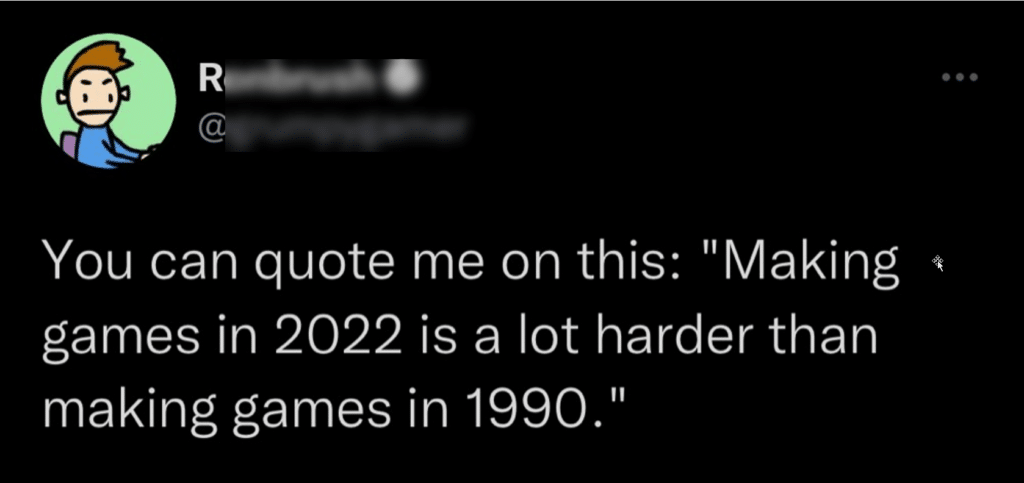
Marcus, one of our team members, pasted this into our Microsoft Teams chat yesterday. I’m not sure where he got it, or why he posted it to me, but it did start me thinking.
When Marcus first posted that question, my immediate response was “Software development is tougher now than it has ever been.” I believed it when I said it, but then the question nagged at me, waking me up, unable to sleep, at 4am. It’s a question worth pondering and realistically speaking: There aren’t a lot of people more appropriate than me to ponder it.
I don’t consider myself all that old, but I have been working on computers for over 40 years, with over half of those years spent building games. My first Apple ][ loaded programs from cassette tape and had only 16kb of ram. Roberta’s and my first game Mystery House was considered to be pushing the limits of the Apple ][ technology by requiring 48k of ram and a floppy disk drive. Our company, Sierra, pioneered the use of audio cards in computers, video cards, multiplayer games, and many other innovations. And I’m now working on a game for both PCs and VR.
Roberta and I sold our company in 1996 and retired from game development to focus on world cruising with a small boat. Until last year when we decided to drop back in, to build the game Colossal Cave, I worked hard to maintain my programming skills but stayed away from games. I had a non-compete with the company who acquired Sierra and decided to focus elsewhere.
When all of our lives changed in 2019 with the Pandemic, and taking our boat around the world was impossible, I took time off to write a book about our time building games at Sierra. This brought back a lot of memories and gave a renewed interest in the industry.
At the beginning of 2021, when I started thinking about writing a game, my first question was, “How has game development changed since the 90s?” Given that I had completely refocused our lives on questions like, “Where can I find a good anchorage near Mykonos?” I had absolutely no idea how modern games are developed. It was as if someone had invented a time machine into which Roberta and I could be teleported to the future. Neither of us knew anything about the current game industry other than hearing vague rumors that it had gotten larger. We had not played games or followed the industry.
Sierra used an internally developed proprietary game engine to build our games. In fact, because much of our growth had come from acquiring other companies, we had several game engines. One of the many reasons Roberta and I had stayed away from games, while retired, was that without the use of Sierra’s game engine I knew that it would be impossible to build a game.
A good game engine allows a developer to start much closer to the finish line. Sierra’s engineering team had two kinds of engineers: The ones that worked on our engines, and the ones that worked on games. By using our internal engines, the game developers could focus their energies on building great games without having to think about the low-level details of how the hardware worked, or even what device the game would be run on.
As I started my research, I was surprised to see that there were now two game engines, freely available to any developer, that power most of the modern games: Unity and Unreal. I was curious how they compared to Sierra’s internal engine and how the technology had evolved since the 90s.
Learning to program with these game engines is easy if you make a serious commitment, and have some basic programming skills. Unlike the 90s where game engines were the sole domain of large game companies, like Sierra, anyone interested can download Unity or Unreal, go to YouTube to watch some videos, and start writing code. I found this shocking, and the surprises were just beginning. I tend to be compulsive when I do something, and I spent weeks watching tutorial videos on YouTube. To Roberta’s and my complete surprise, somehow, I had gone from complete ignorance of the modern game industry, to spinning up to speed and starting a game, in under a month. That could not have been done in the 90s. YouTube and free access to game engines is a game changer.
I chose Unity for the game we are working on and cannot say enough good things about it. My fear was that it wouldn’t be as flexible, powerful, or platform independent, as what Sierra had created over our 20-year life. One of my many long-term visions for Sierra was that we would start licensing our game engine to others, and Roberta always felt that this could have been a bigger business than Sierra itself. As usual, Roberta was right. Using Unity any smart developer can easily build a 2d or 3d game.
As I started working on a game, I discovered another HUGE change from game development in the 90s. An entire industry has evolved around selling digital assets, with a huge selection of game characters, background terrains, sound effects, songs, etc. available to be downloaded free or at very low cost. Want an Orc for your game? There are 154 to choose from for under $6, including 34 free ones. In the 90s you’d have needed to pay an artist and an animator a month or more of wages. Now, anyone with some coding skill and a vision for a game can bring it to life. Need a sound effect? If you can’t find something free, which you usually can, there are libraries with 10s of thousands of sound effects you can access with a $10 bill and ask for change. There is plenty of room for companies to create their own graphics and sound, but there have also been successful games that were built using off-the-shelf graphics. In today’s world a dedicated young developer could easily produce a decent looking game with no or little budget. That’s a huge difference from the 90s.
And then there’s the evolution that made it possible for Roberta and I to re-enter the games business. You can now work from anywhere. One of my personal motivations for selling Sierra was that I could no longer handle the travel. Sierra had grown to a thousand employees who were scattered across the world. In a given week I might have a meeting in San Francisco, Boston and Paris. I had regular product reviews that required me to be face to face with the development teams. I would often describe my job as “a Professional Airline Passenger.” Contrast that to how our current game is being developed. We have eighteen full time people. I started to list here what states they live in, but I’m not sure. Geography is no longer an issue in game development. I know a few live in North Carolina, one in New Jersey, one in Idaho, one in Missouri, a couple in Florida but beyond that I’m not sure. A couple live internationally: One engineer lives in Thailand, and we have an artist who lives in Brazil. And yet, during the workday, I feel much closer to each of them than I ever did to any developer at Sierra. We use Microsoft Teams, and chat as a team throughout the day. We all have cameras and we video-chat often. We have team meetings every Monday. They are constantly sharing their screens with me so that I can assist in debugging something, or just to show me their work. I feel infinitely more productive than I ever did at Sierra, and yet Roberta and I have lived our lives as we want. We can work from anywhere in the world and have done so. I’ve had meetings from on our boat while at anchor, and I’ve helped an engineer in Florida write code while sitting in a hotel in California.
And of course, games themselves have evolved. The internet was just evolving in the 90s. Sierra pioneered the first multiplayer games. Massively multiplayer games were just getting started and the idea of “free play” with in-game purchases had yet to evolve. The word “metaverse” had no meaning, although Sierra had given a small taste of what would come via our TSN network. Probably the biggest “evolution” is how games have become so integral to so many people’s lives. I remember it being big news when two people, who met through our TSN network, were married. Today, something like 40% of couples meet online.
Today’s market has far more competition. In 2021 there were 30 games a day released just on Steam. The market has grown immensely, and the barriers to entry are gone. Today, it is entirely possible for an ambitious software developer to seek other talented individuals on the internet and team up to build a great game. If the game is good enough, it will find a market. There is a healthy and thriving “indie” market for games. Of course, Tiger Woods and I could swap golf clubs and I’d still hit most shots into the water, whereas he’d still hit the green. Skill counts, and regardless of the tools you are given, having the right vision for a game, and the skill and determination to bring it to market are still everything.
Welcome to the new world of game development. Game development in 2022 is much different than 1990. That said, there’s really only one thing that counts in game development: Delivering fun. There were good and bad games in 1990 and the same is true today. Ultimately it comes down to having an understanding of how to make someone entertained, and that hasn’t changed one bit. The process is different, but the need to have a great game engine, a great designer, a great team, creative marketers, all combined with a whole lot of hard work, remains unchanged.

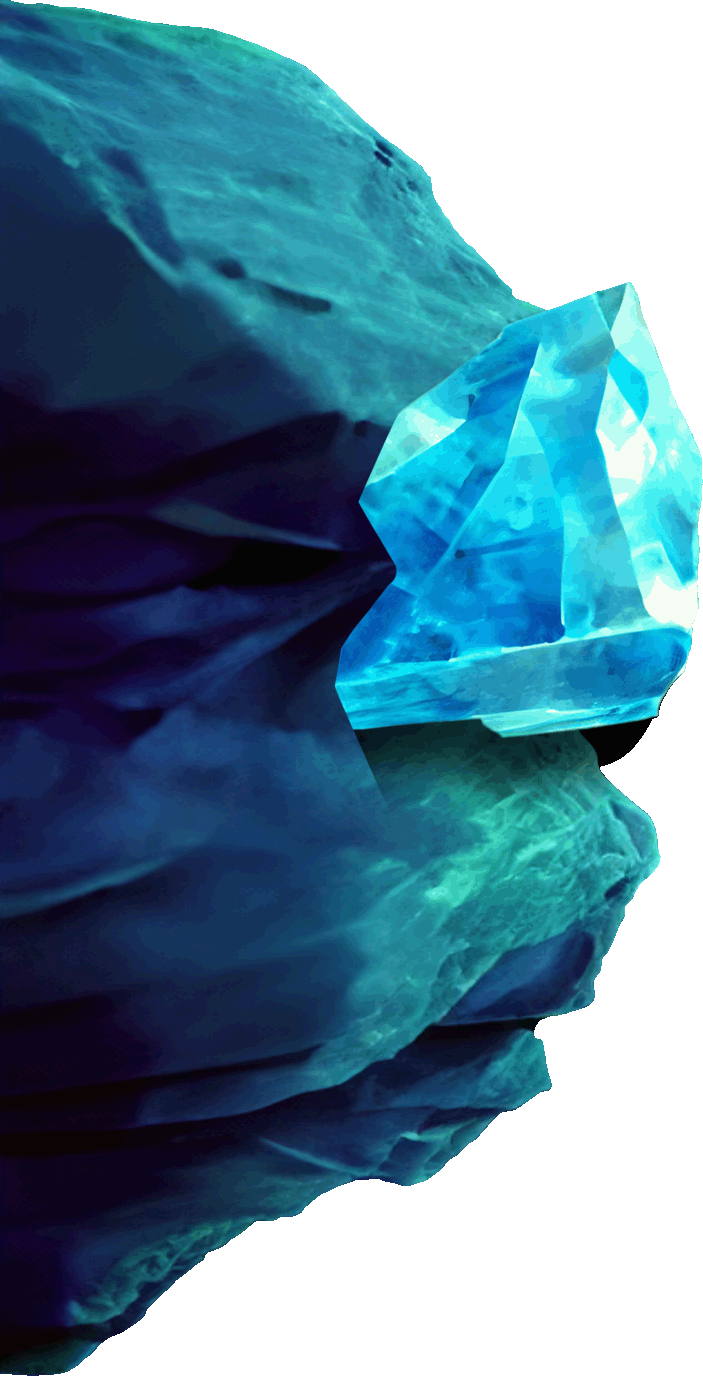




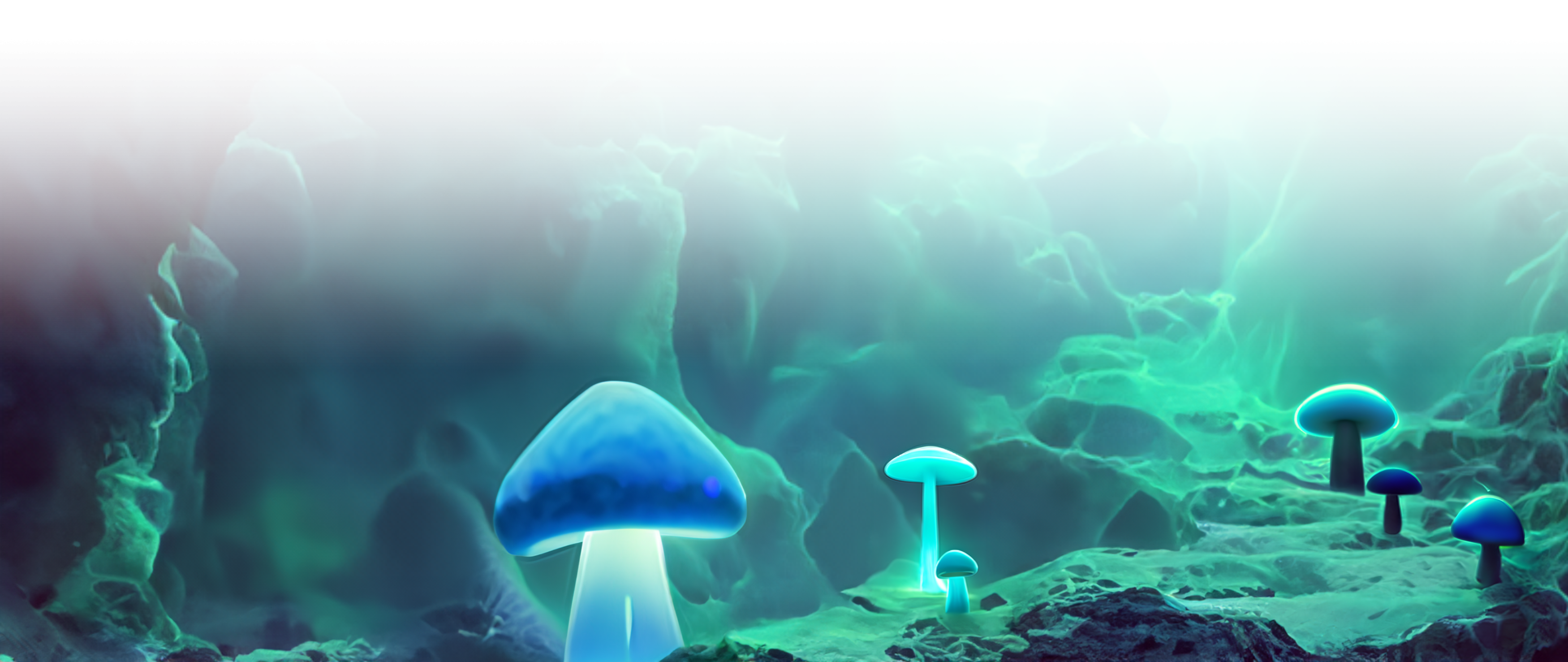
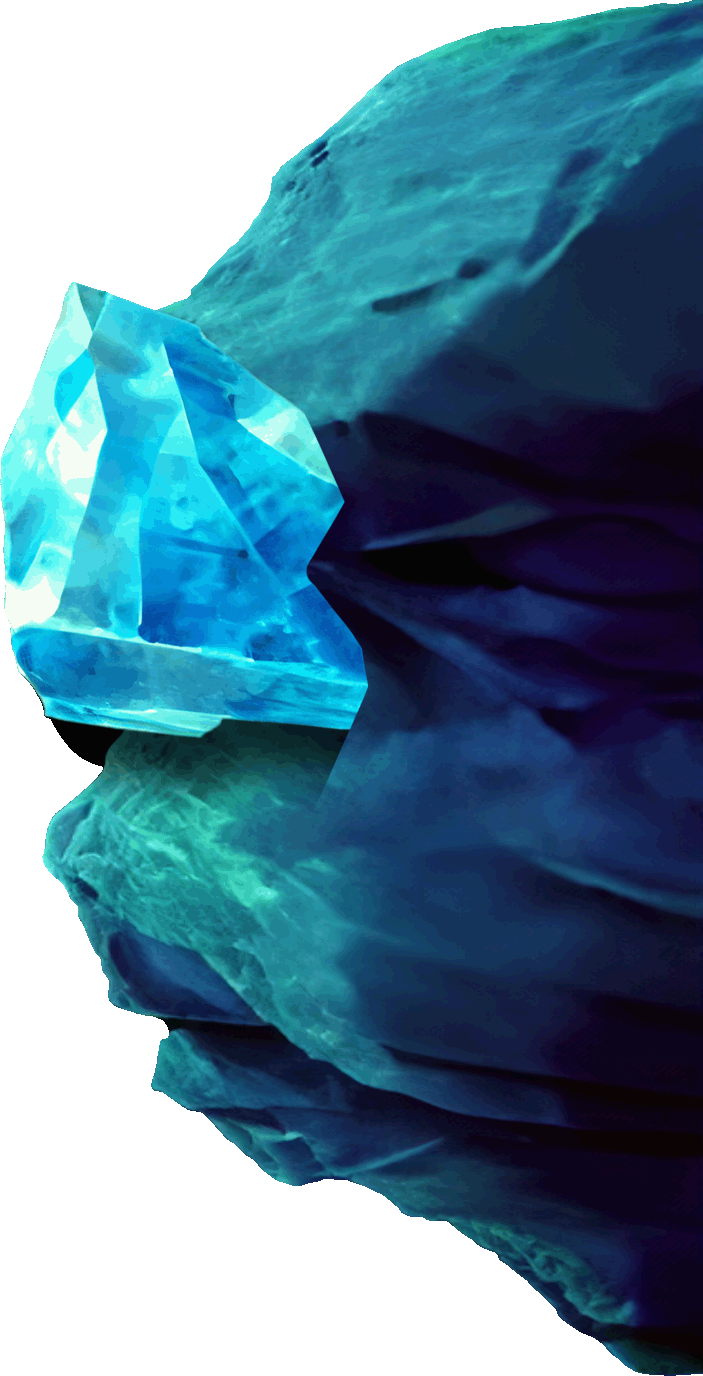


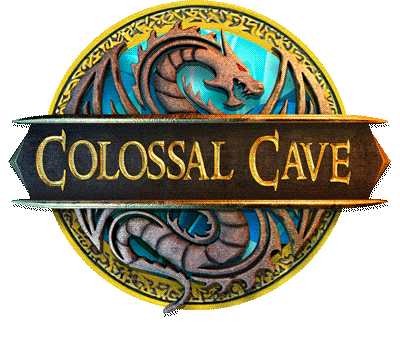
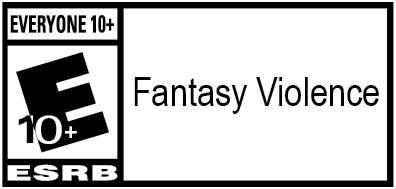


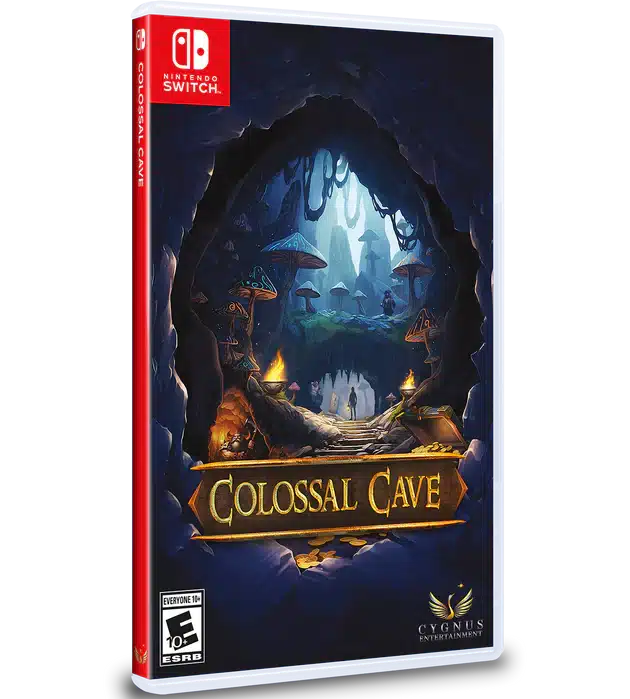
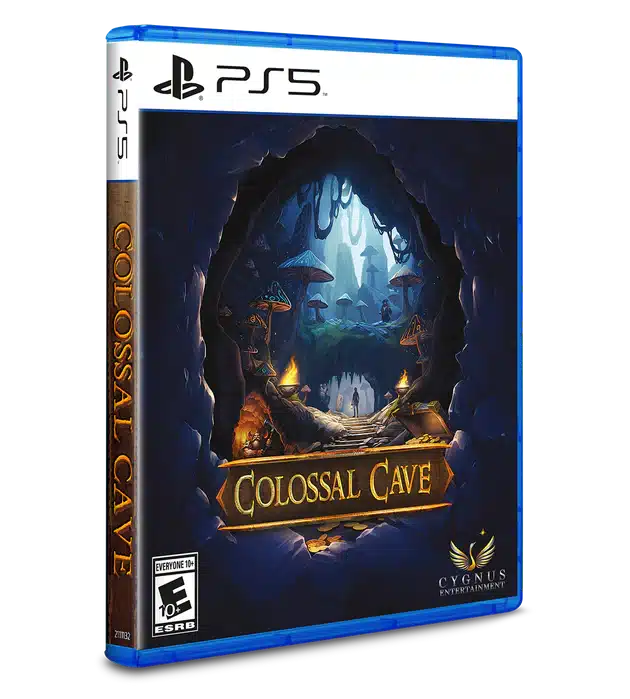
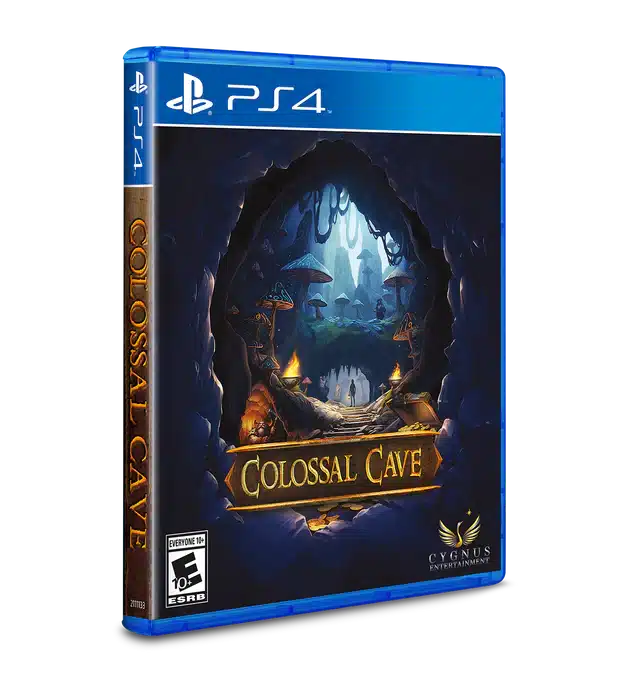
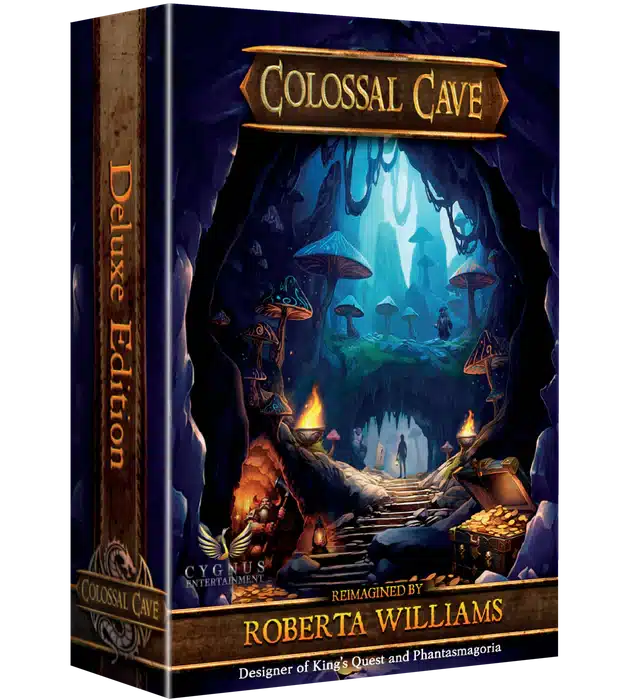

3 Responses
Amusingly, someone just posted on Twitter that the original poster of the question that I spent this blog entry talking about was none other than Ron Gilbert, creator of the Monkey Island series of games. When I talk about there not being many people who have been building games as long as I have, I didn’t realize that Ron Gilbert had started the discussion! He’s certainly someone whose opinion I’d honor and respect. I blurred the name of the original poster because I didn’t recognize it. Oops!
Hi Ken, you beat me to it! Yes, the quote came from none other than Ron Gilbert from LucasArts, with whom Sierra enjoyed a friendly rivalry during the heyday of adventure games. And the honor and respect would certainly be reciprocated… Ron is on record as identifying the original King’s Quest as the computer game which kindled his love for adventure games and so inspired his own career as a game developer. In other words, Maniac Mansion and Monkey Island would never have been if it weren’t for Sierra. Speaking of which, are you aware of Ron’s recent announcement of his own return to Monkey Island? To everyone’s surprise, he revealed that Disney had indeed given him permission to the Monkey Island IP, and that a modern sequel was headed our way later this year! So it looks like the old Sierra versus LucasArts rivalry could also be back for another friendly round 🙂 But to think that later this year I could be playing new games from both you and Roberta, and also from Ron Gilbert, is something beyond my wildest imagination. And to echo Ron… I also wouldn’t be the person I am without Sierra and their wonderful world of adventure games. So thankyou Ken and Roberta, and I wish you both the best of luck for Colossal Cave Adventure… I can’t wait to play it!
It warms my heart to hear you’re getting back into it, Sir!